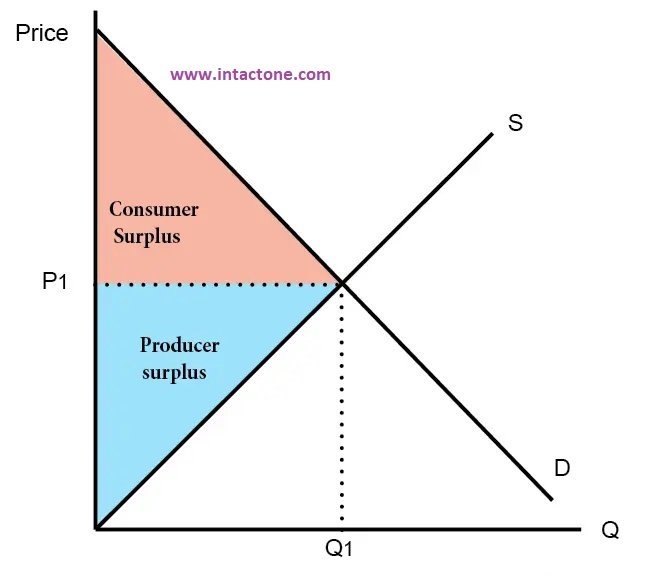Consumer Surplus is the difference between the price that consumers pay and the price that they are willing to pay. On a supply and demand curve, it is the area between the equilibrium price and the demand curve
For example, if you would pay 76p for a cup of tea, but can buy it for 50p; your consumer surplus is 26p
Diagram of Consumer Surplus

Producer Surplus
- This is the difference between the price a firm receives and the price it would be willing to sell it at.
- Therefore it is the difference between the supply curve and the market price.
Consumer Surplus and Marginal Utility
The demand curve is derived from our marginal utility. If the marginal utility of a good is greater than the price, then that is our consumer surplus.

- Firms can reduce consumer surplus if they have market power. This enables them to raise prices above the competitive equilibrium.
- In a monopoly, a firm will maximise profits by reducing consumer surplus.
- Another way to reduce consumer surplus is to engage in price discrimination. Charging different prices to different groups of consumers. Those with inelastic demand will see their consumer surplus reduced. More on Price discrimination. To completely eliminate consumer surplus, a firm would need to engage in first-degree price discrimination this means charging the consumer the highest price they are willing to pay.
- To gain market power, a firm could advertise to create brand loyalty, this will make demand more inelastic
Significance of consumer surplus
- In competitive markets, firms have to keep prices relatively low, enabling consumers to gain consumer surplus. If markets were not competitive, the consumer surplus would be less and there would be greater inequality.
- A lower consumer surplus leads to higher producer surplus and greater inequality.
- Consumer surplus enables consumers to purchase a wider choice of goods.